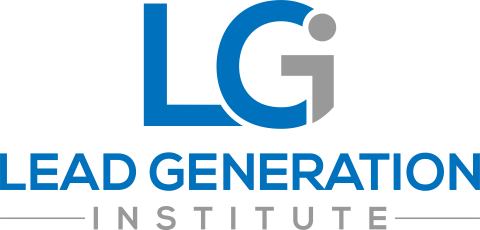How to Calculate the ROI of Lead Nurturing
The B2B world lends itself to a focus on the “now”. It makes sense. We need to close deals and we need the current quarter’s numbers to hit or exceed goal. That’s why lead generation efforts tend to be short-sighted. With monocular objectives and a general lack of patience for results, sales teams and their organizations often find themselves missing out on opportunities to cultivate and convert leads whose buying cycles are either undefined or stretch beyond the current quarter.
While it’s true that 46.4% of new B2B sales take over six months to close, it’s also important to remember that around 70% of qualified leads that make it to sales become disqualified for one reason or another. They are either sent back to marketing or left inactive. But here’s the thing: Up to [bctt tweet=”80% of these discarded prospects will ultimately go on to make a purchase, either from you or your competitor, within the next 24 hours. Despite this, only a small portion of companies have prioritized some form of a lead nurturing program to keep these leads active and interested.”]
Lead nurturing programs keep communication lines open and provide information to your prospects throughout the sales funnel. They have numerous potential benefits for sales-driven organizations such as:
- Faster sales cycles
- Educating people that aren’t yet ready to buy
- Growing revenue by reactivating cold leads
- Creating new sales opportunities
- Raising awareness for your brand and product
- Boosting lead-to-customer conversion rates
- Generating more qualified leads while lowering costs
Creating a lead nurturing strategy and optimizing it will take some time. It’s for this reason why starting with a quantified return on investment (ROI) goal is important. You can use it to measure the success of your campaign over time.
Calculating Lead Nurturing ROI
When calculating the ROI generated by lead nurturing, there are two metrics to keep in mind. First, we have the lead-to-customer conversion rate, and second, the average sales price (ASP).
Also, nurtured leads come in two forms – new leads and stale leads. Keep in mind that you’ll be calculating your marketing ROI for both separately. Ok, now for the math.
How to Calculate the ROI of New Leads
New lead nurturing ROI is calculated from the revenue generated from nurtured leads when compared to non-nurtured leads.
- Monthly revenue generated from non-nurtured leads – Take the number of new leads that come in each month and multiply it by the current conversion rate. You then multiply that by the average amount each new customer spends (ASP).
The formula: New Leads x Current Conversion Rate x Current ASP = New Lead Monthly Revenue
Say, for instance, you have a conversion rate of 10% and 200 new leads per month. That’s 20 new customers per month. And with an average ASP of $200 per month, you get $4,000 monthly revenue.
- Monthly revenue generated from nurtured leads – Now, say your lead nurturing campaign has increased your conversion rate by 20% and your ASP by 30%. The new formula stays the same, the difference being that you input the new conversion rate and ASP.
By using the same example as above, your conversion rate has gone from 10% to 12% (a 20% increase), and your ASP has gone from $200 to $260. So, if those 200 new monthly leads convert at a rate of 12%, you get 24 new customers instead of 20. Multiply 24 by the $260 ASP, and you get $6,240.
- Making the Difference – By subtracting the sum generated by nurtured leads to that of non-nurtured leads, you get $2,240, which is your predicted monthly ROI. Per year, that will equate to an additional $26,880. Giving our example company a 56% increase in expected revenue. By subtracting any expenses associated with your lead nurturing program, you end up with your real ROI.
How to Calculate the ROI of Reactivating Cold Leads
But what about those idle leads in your database that you’ve already spent a small fortune on? If you aren’t actively nurturing them, you’re losing money on your lead generation right there. Calculating this ROI is pretty straightforward, as well.
- How many cold leads will you reactivate? – With a solid nurturing campaign in place, you can expect to reactivate anywhere between 2% to 5% of your contact base. Say, you have around 20,000 cold leads in your database. If you reactivate 3%, that’s an additional 600 leads per year.
- How many of these leads will you convert? – Though it takes longer for these leads to surface, you can expect the majority of them to be further along in the buyer’s journey than when you originally encountered them. This, in turn, means that they have a higher conversion rate, typically at three times your baseline. So, with a 30% conversion rate, you have 180 extra customers per year out of the original 600 leads. Multiply that with the $260 ASP, and you end up with an additional $46,800 per year in revenue from reactivated leads.
This is a simple formula to calculate the ROI of your lead nurturing, but it provides you with a baseline to at least start examining the efficacy of your nurturing efforts. More sophisticated ways of determining the ROI include other key performance indicators (KPIs) such as your unsubscribe rates, sales lifecycle, response rates, engagement, MQL/SQLs/opportunities/sales ratios, and others. Examining these KPIs in relation to nurtured and non-nurtured leads will provide for a broader understanding, outside of revenue of how your lead nurturing program influences your prospective and existing customers.
Lead nurturing is essential if you want to increase your conversion rates, shorten your sales cycle, and revive old leads. When coupled with lead scoring, marketing, and sales automation your lead nurturing efforts will be even more effective.
If you want to learn more about lead nurturing and other content marketing strategies, subscribe to our newsletter and get the latest delivered to your inbox.




